
Póngase en contacto con nosotros

La producción convencional de amoníaco es una de las mayores fuentes industriales de emisiones de CO2, ya que representa alrededor de 1,8% de las emisiones mundiales de CO2.








Póngase en contacto con nosotros
La tecnología de purificación criogénica de gas de síntesis de KAPSOM está reconocida como el método más rentable para producir gas de síntesis de alta pureza en la fabricación de amoníaco. Esta tecnología elimina eficazmente impurezas como el metano y el argón del gas de síntesis, utilizando el exceso de nitrógeno para el stripping y ajustando al mismo tiempo la relación hidrógeno/nitrógeno (H2/N2) a 3.
Además, el sistema de intercambiador de reformado de KAPSOM ofrece la posibilidad de reformar hasta 30% del total de gas natural alimentado a la planta. Esto se consigue utilizando el calor residual del proceso de alta temperatura del reformador secundario (o reformador autotérmico), reduciendo así la necesidad de quemar combustible adicional.
El gas efluente del reformador ATR/secundario proporciona calor para impulsar la reacción de reformado que tiene lugar dentro de los tubos de reformado llenos de catalizador;
Los tubos son de extremo abierto y cuelgan de una única lámina tubular en el extremo frío de entrada para minimizar los problemas de dilatación ; Carga fácil a través de un cabezal superior desmontable;
La comunidad mundial está experimentando un rápido cambio hacia la descarbonización y los objetivos de emisiones netas cero, con el objetivo de reducir significativamente las emisiones de carbono en 7 gigatoneladas anuales para 2050. Esto marca el comienzo de la era de la captura, utilización y almacenamiento de carbono (CCUS). Los objetivos climáticos más estrictos, las expectativas cada vez mayores de las partes interesadas y los nuevos incentivos financieros sitúan al CCUS a la vanguardia de la transición a cero emisiones netas.
En KAPSOM, nuestro compromiso es con un futuro con menos emisiones de carbono. Utilizando nuestros conocimientos especializados, proporcionamos las tecnologías y soluciones CCUS necesarias para ayudar a nuestros clientes en sus esfuerzos de descarbonización. Nuestros servicios globales le permiten aprovechar eficazmente las oportunidades para reducir la huella de carbono, emplear soluciones energéticas bajas en carbono y alcanzar objetivos de emisiones netas cero en diversos sectores.
Póngase en contacto con nosotros
La producción de amoníaco implica la transformación de gases de nitrógeno e hidrógeno (comúnmente denominados "gas de síntesis" o "syngas") en condiciones específicas de temperatura y presión, utilizando un catalizador. En la actualidad, el gas de síntesis se obtiene principalmente a partir de materias primas y combustibles de hidrocarburos, que contribuyen a unas 1,8% de las emisiones mundiales de CO2.
En cambio, el amoníaco azul se genera utilizando hidrocarburos, pero con una diferencia crucial: el CO2 liberado durante su producción se captura y almacena mediante la tecnología de captura, utilización y almacenamiento de carbono (CCUS). Este proceso mitiga considerablemente el impacto ambiental.
KAPSOM se especializa en tecnología de amoníaco azul y ofrece soluciones tanto para plantas nuevas como para las ya existentes. Estas soluciones están diseñadas para reducir sustancialmente las emisiones de CO2 por tonelada de amoniaco producida, al tiempo que aplican eficazmente estrategias de CCUS.
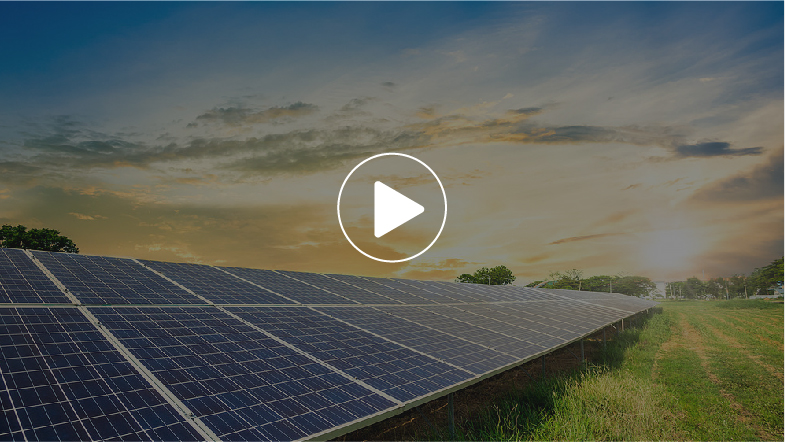
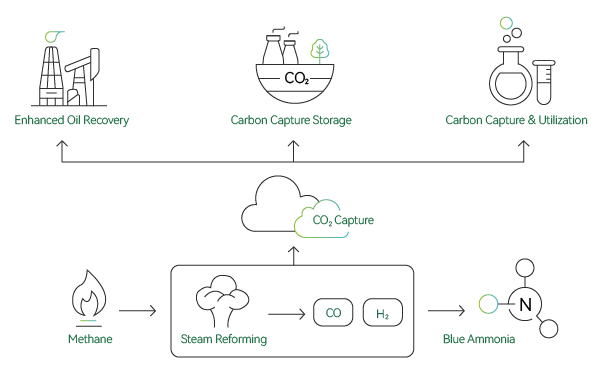
Póngase en contacto con nosotros
El amoníaco azul, una solución novedosa en la búsqueda de energía sostenible, está ganando impulso. Esta sustancia innovadora, derivada del amoníaco con una huella de carbono significativamente reducida, se perfila como un actor clave en el cambio mundial hacia fuentes de energía más limpias. Al aprovechar sus propiedades únicas, el amoníaco azul ofrece una alternativa ecológica para diversas industrias, lo que supone un paso fundamental para reducir las emisiones de gases de efecto invernadero y fomentar un futuro más ecológico.

Al igual que el amoníaco tradicional, el amoníaco azul se utiliza ampliamente en la producción de fertilizantes nitrogenados. Ofrece una alternativa menos intensiva en carbono, ayudando a reducir la huella de carbono de las prácticas agrícolas.
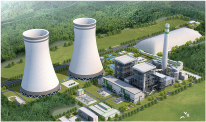
El amoniaco azul puede utilizarse como combustible en las centrales eléctricas. Su combustión es más limpia que la de los combustibles fósiles, y es especialmente valioso en regiones en transición hacia fuentes de energía bajas en carbono.

La industria marítima está estudiando el amoníaco azul como posible combustible para los buques, dado su perfil de emisiones inferior al de los combustibles marinos convencionales.
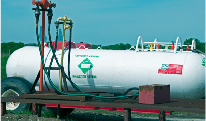
El amoníaco es un eficiente portador de hidrógeno, y el amoníaco azul proporciona una forma de transportar hidrógeno con emisiones de carbono reducidas. Puede craquearse para liberar hidrógeno y nitrógeno, donde el hidrógeno puede utilizarse como fuente de energía limpia.
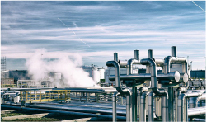
El amoníaco azul puede servir como materia prima en la fabricación química de diversos productos, ofreciendo una alternativa más sostenible al amoníaco tradicional.

Puede utilizarse para almacenar energía, sobre todo en situaciones en las que el almacenamiento del exceso de energía renovable en forma de amoníaco es más viable que el almacenamiento en baterías.
Póngase en contacto con nosotros
En 2021, KAPSOM ayudó a una empresa solar india a construir la primera planta ecológica de amoníaco del mundo. Esta instalación pionera reducirá las emisiones de CO2 en 6240 TPA. El éxito de la operación del proyecto no solo sirve como ejemplo de tecnología "power-to-x", sino que también establece una base sólida para la siguiente fase de la iniciativa de amoníaco verde a gran escala del cliente.
En 2022, KAPSOM ayudó a una empresa saudí de energías renovables a desarrollar una planta ecológica de amoníaco. Por primera vez, el proyecto empleó un diseño altamente integrado, utilizando las dimensiones de un contenedor de 40 GP como base para la unidad de síntesis de amoníaco. Este enfoque innovador tenía por objeto facilitar el transporte de los equipos, simplificar la construcción in situ y reducir el tiempo necesario para la puesta en marcha y el arranque.
En 2022, KAPSOM colaboró con una empresa colombiana de capital riesgo para adentrarse en el sector local del amoníaco ecológico. El diseño general del proyecto utilizó contenedores como base para mejorar la integración de los equipos de cada unidad primaria. Además, se implantó un sistema de control inteligente para permitir el control automático. Se espera que esta iniciativa ahorre al cliente unas 8.320 toneladas de emisiones de carbono al año.
En junio de 2023, KAPSOM unió fuerzas con la DGHV para ayudar a establecer el primer proyecto de síntesis de amoníaco verde totalmente dinámico y neutro en carbono de África. Con una capacidad total de 1,5 GW, la primera fase de este proyecto obtuvo financiación del Ministerio Federal Alemán de Investigación y Educación, así como el apoyo del gobierno local. Su principal objetivo es producir hidrógeno verde, amoníaco verde y derivados relacionados.